BFPA Economic Forecast Seminar 2018
29 Oct 2018
Around 45 members attended BFPA’s annual Economic Forecast Seminar on 10 October at the superb AMTC / MTC complex in Coventry which centred around the latest five year fluid power industry forecast and global economic update from Oxford Economics, with supporting presentations from BEIS and the MTC.
Jeremy Leonard, Director of Global Industry Services opened the event with an overview of the main economic developments in the past year.
Oxford’s overall assessment of the current economic situation was that although there was evidence of a slowdown in growth global, activity would remain firm despite negative risks such as rising protectionism threatening world trade.
The rise in oil prices over the last twelve months (from around $45 a barrel in Oct-17 to $80 a barrel in Oct-18) had led to inflationary pressures but so far there was no evidence of higher than average wage rises and housing markets were not overvalued (as they were prior to the crash ten years ago) – all this, together with easy access to credit and healthy investment indicators pointed to a slowdown but not a recession in Oxford’s opinion.
Moving onto the global industrial outlook, Jeremy highlighted a slowdown in world industrial output in H1 2018 although evidence also suggested there was a severe lack of capacity requiring a need to invest in new equipment, which in many countries was being put on “pause” because of uncertainty over such things as tariffs and Brexit.

The second part of Jeremy’s presentation focused on the short and medium term prospects for fluid power. BFPA’s monthly survey data for both hydraulics and pneumatics had been strong going into 2018 but had peaked and appeared to be consistent with overall UK economic indicators which suggested the industry was heading for a period of slowdown. He reviewed the recent performance of some of the end user sectors for fluid power such as food and beverage, automotive and oil and gas and also gave Oxford Economics’ view of the potential impact of a “no-deal” Brexit outcome. He finished his presentation with a summary of the forecast for fluid power: 2018 should end the year with growth over 2017 in both hydraulics and pneumatics with the mobile sector outperforming industrial in hydraulics. The detail and longer term forecasts are included in the full report available from the BFPA.
Industrial Strategy Update – Oct-18
Terry Boniface, Assistant Director, Electronics and Machinery, Advanced Manufacturing Directorate at the Department for Business, Energy and Industrial Strategy, then gave an update on progress of the Industrial Strategy since last autumn.
 He reminded the audience that the Industrial Strategy’s long term aim is to increase the UK’s productivity which lags well behind most other countries and boost earning power. Five foundations to the productivity puzzle had been identified as:
He reminded the audience that the Industrial Strategy’s long term aim is to increase the UK’s productivity which lags well behind most other countries and boost earning power. Five foundations to the productivity puzzle had been identified as:
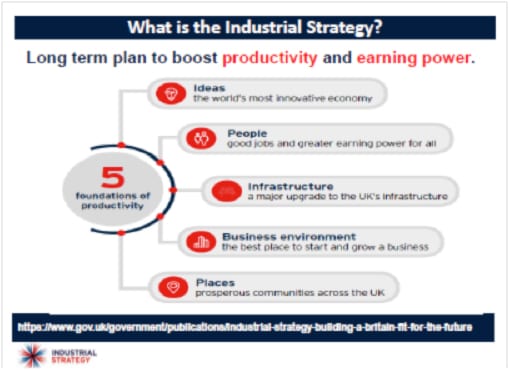
Furthermore, four key areas had been identified as “Grand Challenges”:
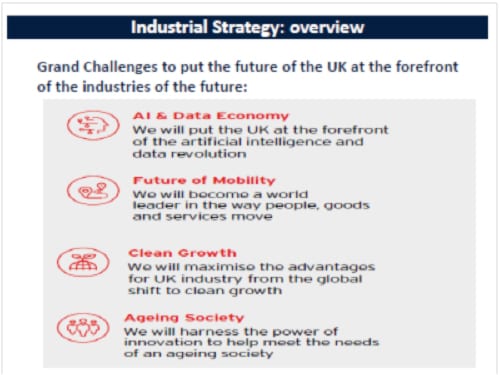
The £ 4.5 billion “Industrial Strategy Challenge Fund” to back new technologies and support early research to commercialisation had already committed around £ 1.4 billion to various projects including battery technology and a third round of bidding for investment fund money was currently underway. Ideas under consideration include changes to government procurement and standards.
Under the places and infrastructure strands, investment was planned for within the “Northern Powerhouse” and “Midlands Engine” to fund local innovation and transport initiatives such as the Oxford to Cambridge corridor.
Following consultation last year, a new “Made Smarter North West” pilot £ 20 million initiative had been launched aimed at SMEs mainly to increase the uptake of smarter technologies. Companies in the North West can “self-nominate” to bid to be part of this initiative, with the Government aiming to offer up to £ 20K per company (although some advice would be given during the bid process to all companies) to assist with the implementation / take up of digital technology to increase productivity. If successful, the aim is to roll the project out to other parts of the UK.
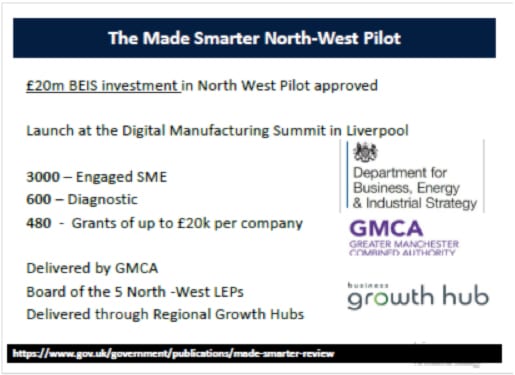
MTC Overview Oct-18
Dr Lina Huertas then gave an overview of the UK HVM Catapult centres and the MTC in particular. Some key points of interest from her presentation were:
- 7 HVM Centres based across the UK with specialisms
- 1900+ staff across the 7 centres
- 1878 innovation projects
- 3036 private sector clinets of which 56% are SMEs
- Many of the HVM Centres (including MTC) run Advanced Engineering Apprenticeship and Engineer Upskilling schemes
- HVM centres focus on a wide selection of markets including: aerospace, automotive, constrocuton and infrastructre, elcetronics and computing, energy, food and drink, military and defence and oil and gas.
The MTC at Coventry focuses on manufacturing innovation in the following areas: Component manufacturing (additive manufacturing, non-conventional machining and high integrity fabrication), Assembly Systems (Advanced tooling and fixing, electronics manufacturing and robotics and autonomous systems), and Data Systems (Design and simulation, manufacturing informatics and metrology and NDT).

In addition, the MTC offers assistance in improving operational efficiency, launching new businesses and an SME REACH programme.
Following Lina’s presentation, many delegates were able to take advantage of tours of the MTC research facilities to finish off what was a very interesting day.
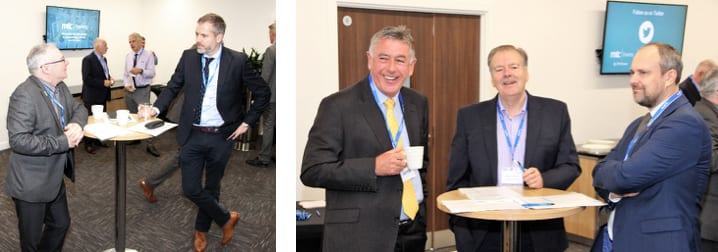
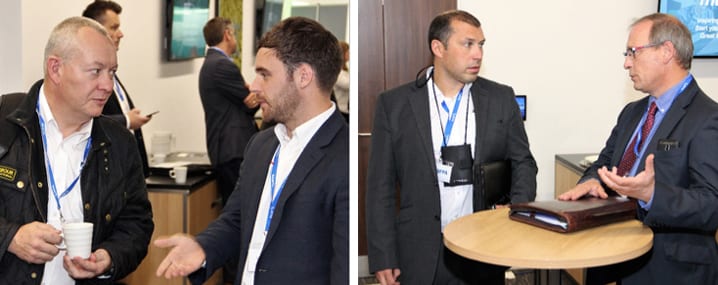
For more details on how to purchase a copy of the 2018-2022 BFPA Fluid Power Forecast and proceedings from the day, or anything contained in this article please contact Sarah Gardner at sarah@bfpa.co.uk

